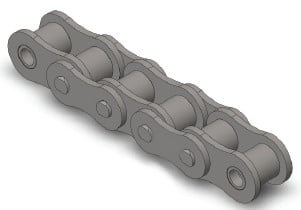Roller chains are one particular of the most productive and price eff ective tips on how to transmit mechanical energy between shafts. They operate more than a wide selection of speeds, manage significant working loads, have really tiny power losses and are frequently low-cost in contrast with other methods
of transmitting power. Profitable assortment includes following a number of relatively simple steps involving algebraic calculation and also the utilization of horsepower and service factor tables.
For just about any provided set of drive disorders, there are a number of possible chain/sprocket confi gurations that can efficiently operate. The designer as a result should be conscious of many fundamental selection ideas that when applied correctly, assist stability overall 
General Roller Chain Drive Principles
? The advised quantity of teeth for that tiny sprocket is 15. The minimal is 9 teeth - smoother operation is obtained with additional teeth.
? The encouraged greatest number of teeth for your substantial sprocket is 120. Note that when extra teeth permits for smoother operation owning as well lots of teeth leads to chain jumping off the sprocket soon after a rather small volume of chain elongation on account of put on - Which is chains using a really big number of teeth accommodate less dress in prior to the chain will no longer wrap around them effectively.
? Speed ratios needs to be 7:1 or significantly less (optimum) and never better
than ten:one. For bigger ratios using a number of chain reductions is recommended.
? The advisable minimal wrap in the tiny sprocket is 120°.
? The suggested center distance concerning shafts is 30-50 pitches of chain. You can find two exceptions to this as follows:
one. The center distance should be higher than the sum in the outside diameters from the driver and driven sprockets to avoid interference.
two. For pace ratios higher than three:one the center distance should not be much less compared to the outside diameter of the big sprocket minus the outside diameter on the compact sprocket to assure a minimum 120° wrap about the tiny sprocket.
ASME/ANSI Drive Chain
Tags: